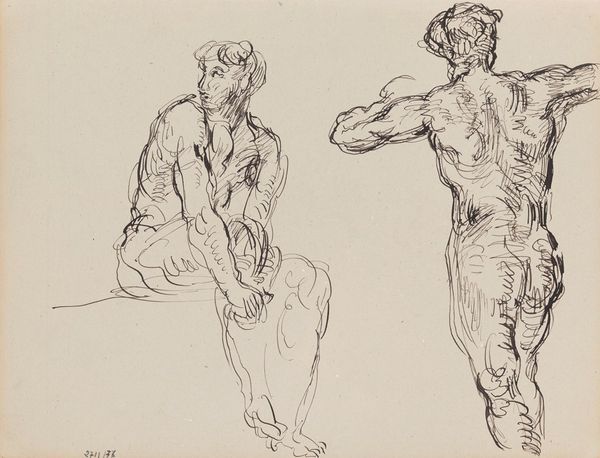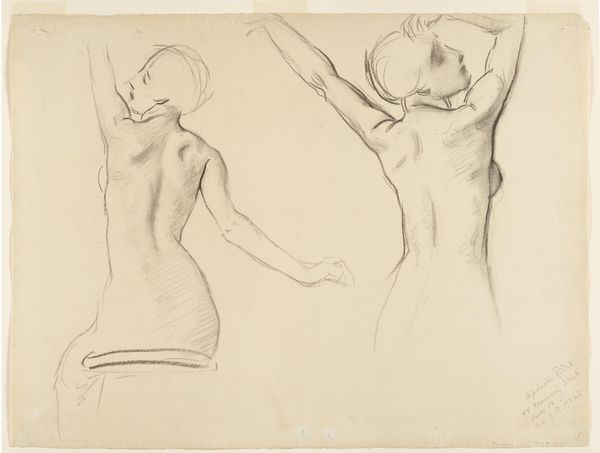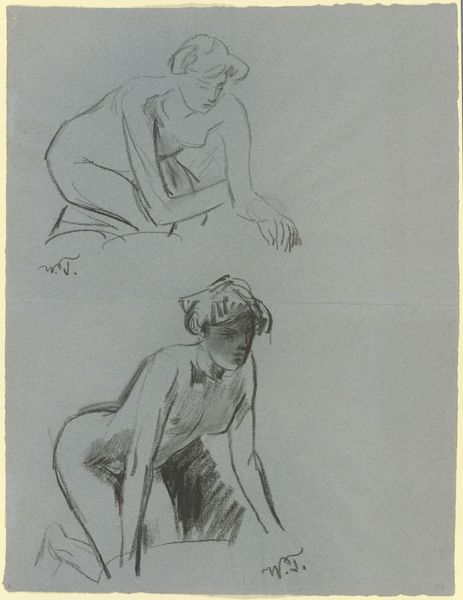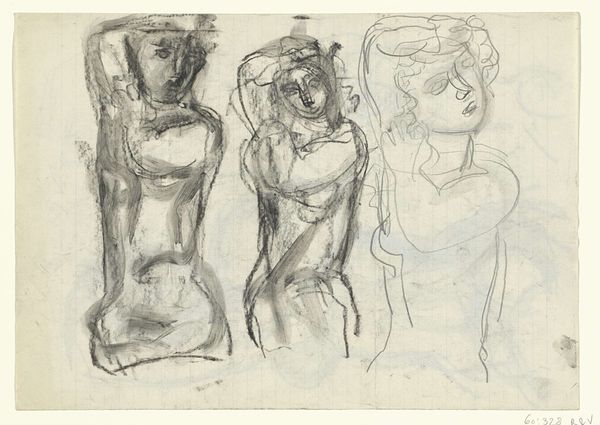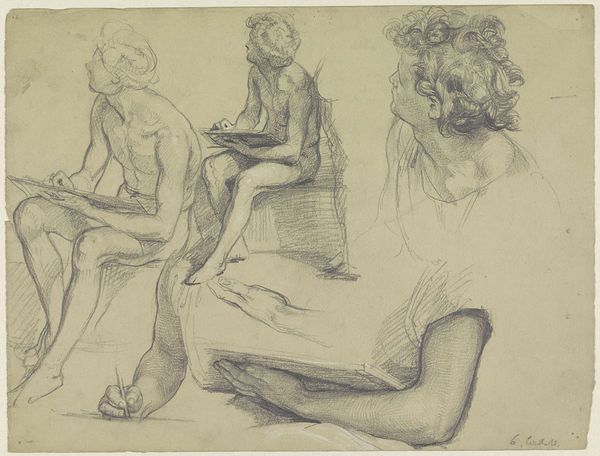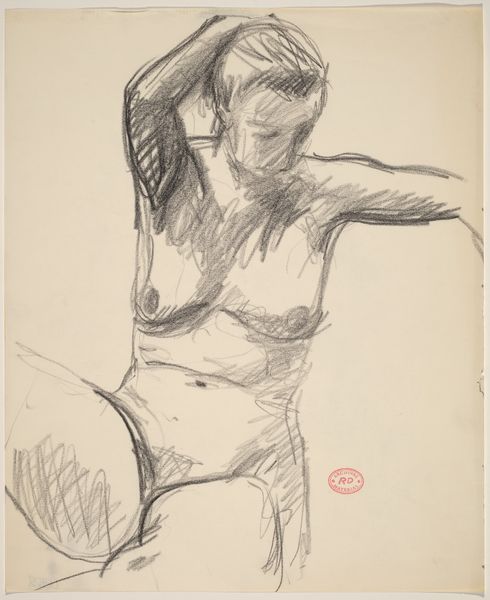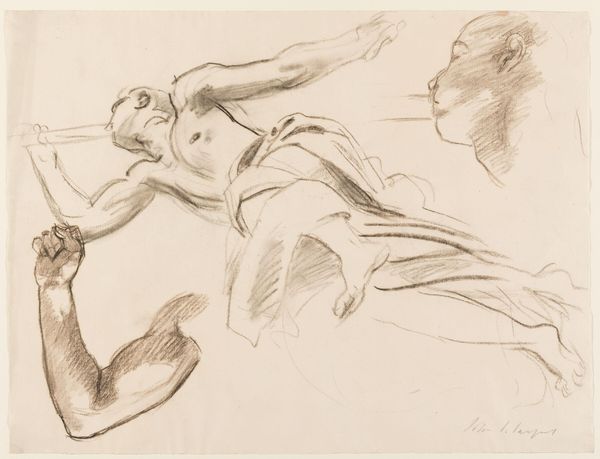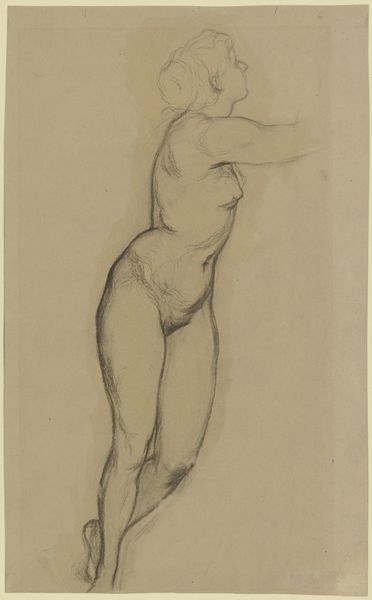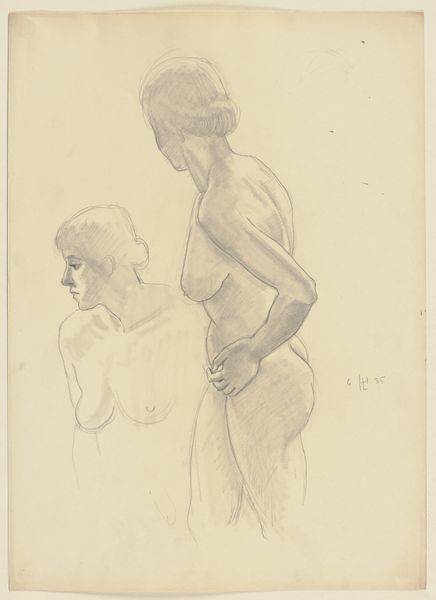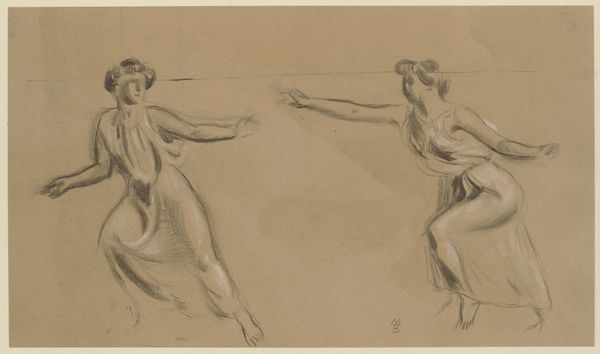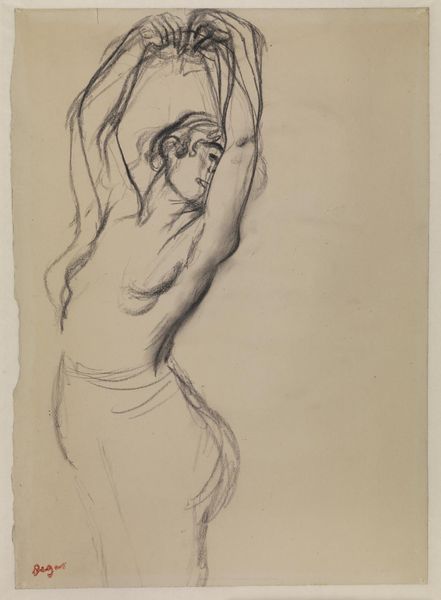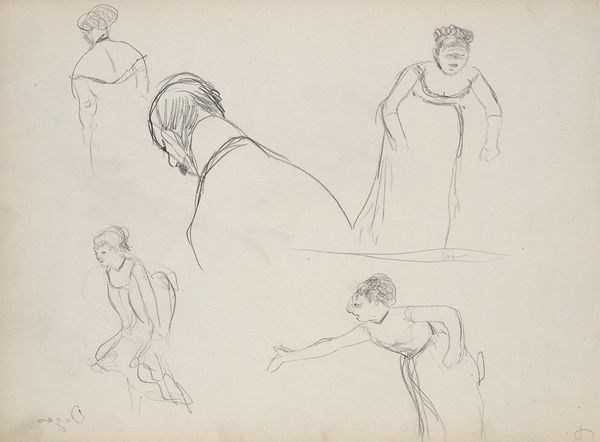
drawing, print, paper, dry-media, chalk, charcoal, pastel
#
portrait
#
drawing
# print
#
impressionism
#
pencil sketch
#
study drawing
#
charcoal drawing
#
paper
#
dry-media
#
pencil drawing
#
chalk
#
portrait drawing
#
charcoal
#
pastel
Dimensions: 492 × 637 mm
Copyright: Public Domain
Editor: So, here we have Degas' "Study of a Singer," made sometime between 1878 and 1880. It's charcoal and pastel on paper, and what strikes me is how raw and immediate it feels, like we're catching a glimpse behind the scenes. What do you see when you look at this drawing? Curator: What interests me most is the evidence of process. The visible layering of charcoal and pastel tells us a great deal about Degas’s working method. Consider the costuming. How does it indicate the position of these working women, caught in the act of production for a consuming public? Editor: That's interesting, I hadn't thought about the labor involved. You see the drawing more as a document of work rather than a celebration of performance? Curator: Precisely! The fleeting nature of the Impressionist style, often associated with capturing a moment, can obscure the actual labor behind such moments. This "Study" lays bare the mechanics - the rehearsal, the physical exertion, and the materials required to produce the illusion of effortless artistry. What is the commodity that these women are helping to produce and sell? Editor: The performance, the music... entertainment? And the materials are, quite literally, the charcoal and pastel? Or perhaps the costumes? Curator: Think more broadly. What are the social conditions, the means of production, that allow for this sort of entertainment, and the creation of this image of that entertainment, to exist? Who benefits and how, at the expense of other people's material labor? How are the women compensated for their physical strain and work? Editor: It really changes my perspective on the drawing. It is not just an Impressionistic sketch of a singer; it reveals a whole network of social and material relations. I see it now, thanks! Curator: Indeed. By looking at the art’s production, the labor, and the societal structures underpinning it, we get a richer and more complex understanding.
Comments
No comments
Be the first to comment and join the conversation on the ultimate creative platform.
